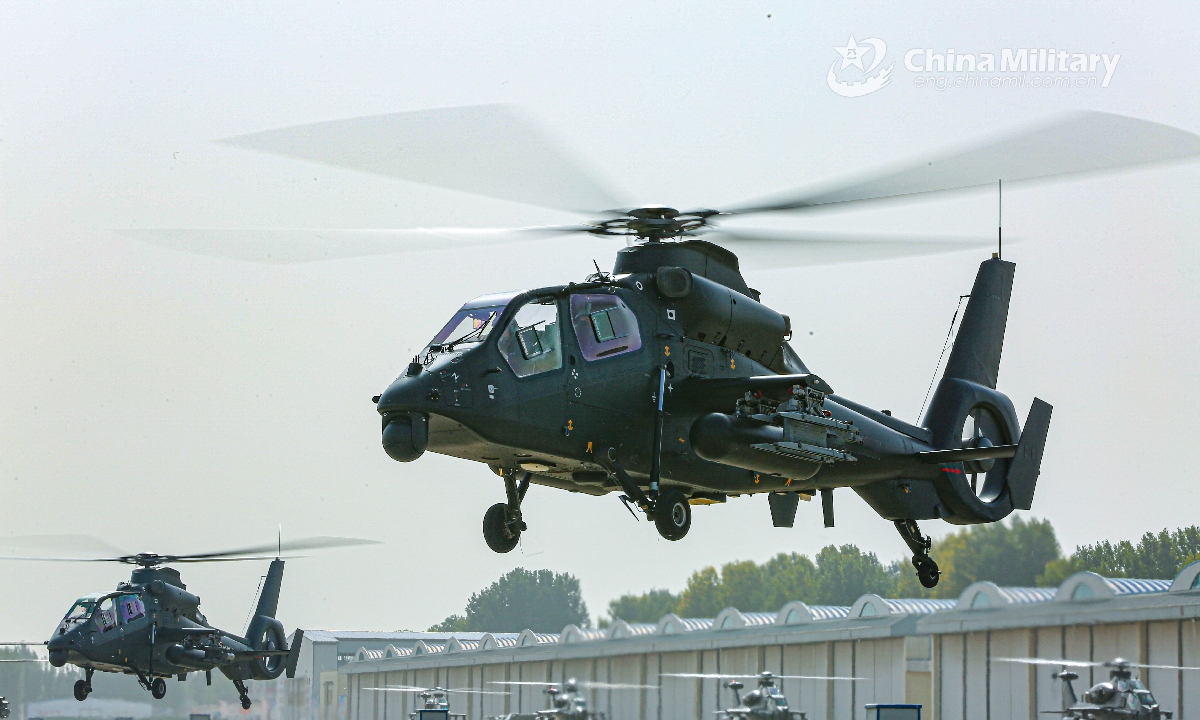
Two Z-19 attack helicopters attached to an army aviation brigade under the PLA 80th Group Army lift off from the parking apron during a round-the-clock flight training mission on October 21, 2020. (eng.chinamil.com.cn/Photo by Yi Diyu)
A type of blended wing body multi-rotor vertical takeoff and landing aircraft, which is a key national defense project of China that's expected to play both military and civilian roles, has passed an acceptance review, with analysts saying on Thursday that the new aircraft could offer higher flexibility and longer endurance than current aircraft.
Led by the Harbin Aircraft Industry Group Co, which is under state-owned Aviation Industry Corp of China (AVIC), the project has finished the full process of conceptual design, general design, control and measurement, prototype manufacturing and test flight verification, making breakthroughs in key technologies in general aerodynamic design and the integration of elevons, China Aviation News reported on Wednesday.
AVIC's Harbin Aircraft Industry Group is responsible for making the Z-20 utility helicopter, the Z-9 light helicopter family and the Z-19 light attack helicopter. The company also developed the Y-12 fixed-wing transport aircraft, according to the company's website.
The new rotary-wing aircraft recently passed an acceptance review as a key national defense laboratory fund project in the field of helicopter rotor dynamics at Nanjing University of Aeronautics and Astronautics, the newspaper report said.
After improvements and customization, the aircraft can be modified for both military and civilian use, as it can be used in missions including early warning, reconnaissance, communications relay, electronic warfare, power grid patrol, forest fire detection and aerial photography, according to the report.
The report did not provide any images of the aircraft, nor did it reveal further specifics, including if the aircraft is crewed or a drone.
An aircraft with a blended wing body design usually has advantages in range and endurance, as this aerodynamic design reduces drag and provides extra lift, a Chinese military expert who requested anonymity told the Global Times on Thursday, noting that this could also contribute to the aircraft's stealth capability.
Being capable of vertical takeoff and landing means the aircraft will be very flexible in deployment, as it does not require a runway and is able to hover just like a helicopter, or even more likely, a tilt-rotor aircraft, the expert said.
Combining those two characteristics is an innovation, the expert said.
Meanwhile, this is not the first innovative rotorcraft China has unveiled. For example, at the 5th China Helicopter Exposition held in North China's Tianjin Municipality in October 2019, China displayed
a flying saucer-like attack helicopter dubbed the Super Great White Shark.




